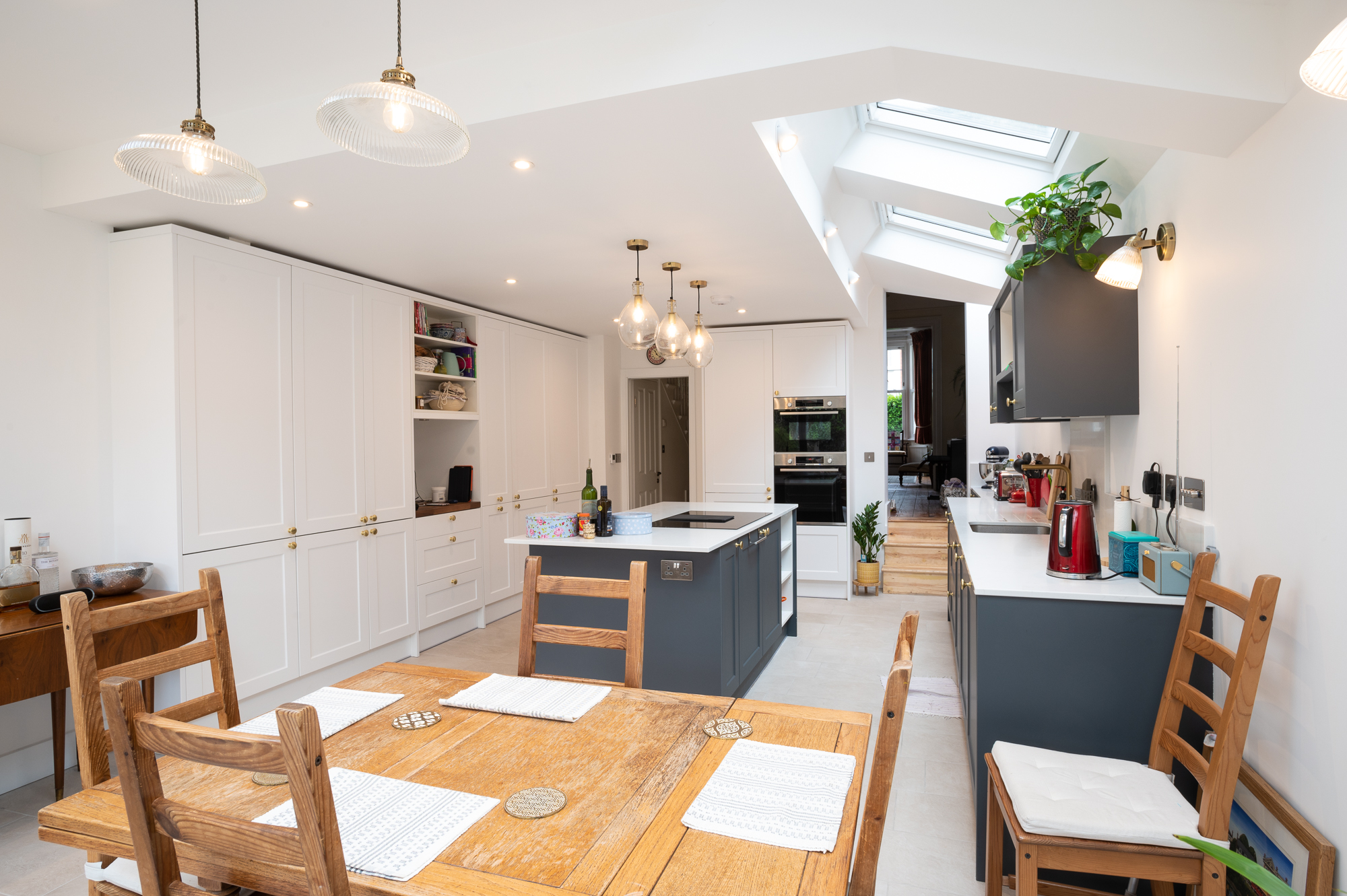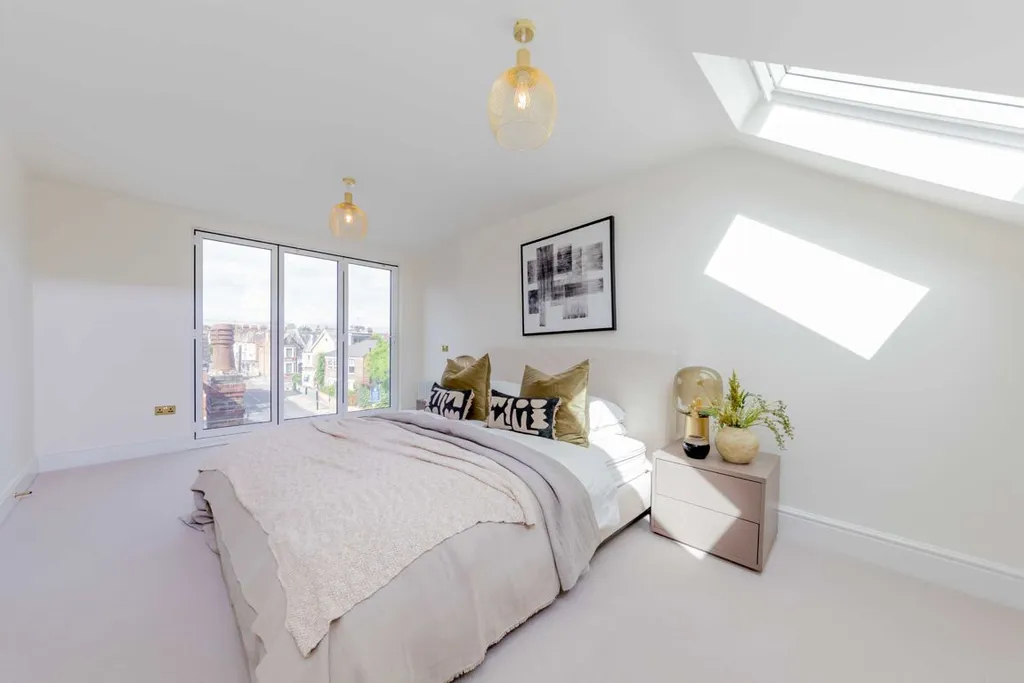A home office is not something just Stephen King has to whip up scary monsters. In the modern world, it’s relevant to every profession. However, we don’t all live in homes that have an extra room for this purpose. Where every square foot of a property is valuable space, how do Londoners find a place to create professional masterpieces? Loft office is the simple answer. Depending on how big of a work-space you need, you can either incorporate the office into other loft conversion ideas or dedicate the whole area to work. The perk of a home office is you get to be its designer, and therefore, can be as eccentric about it as you like. It can even have a bath with a view. So, how do you convert your loft into an office that is both inviting and zen evoking?
We rounded up some of the best loft office space design ideas to help you get inspired.
Make use of the natural light
An ordinary office lacks the ‘natural.’ Sunlight and neighbourhood views are rare in the conventional office setting. Why not make use of the benefit of natural light with large skylights? If you work as an artist, a designer, or an architect, this can be integral to your work. Even if you are not in these professions, it will improve your work all the same. Publications by the Journal of Clinical Sleep Medicine and a study by Cornell University suggest exposure to natural light during work helps you sleep and perform better. By using Velux Cabrio, you are not only getting plenty of natural light but also a smart balcony to have a break with uninterrupted views and fresh air. To expand your natural theme, you can use indoor plants to decorate the office space.
Multi-purpose room
Remember, a loft office conversion doesn’t have to just be about the office. You can use it as a spare bedroom, too. Use a dual-purpose partition wall, a room divider, or a partitioning bookcase to keep the soft comforts of the bed out of sight if open-plan induces temptation to lie down. If the room is just for work, you can think about adding a kitchenette, which will be useful for taking breaks or having your meals in the loft. Space permitted, adding a shower room or a bathroom can increase the value and functionality of the room. If there is extra living space for a lounge area, you can even invite your friends over to spare your family of the mundane work discussions.
Under the eaves cosiness
If your budget cannot stretch as far as a dormer conversion, you can opt for a simple Room in the Roof. To match the humble proportions of the loft room to the décor, think simple, rustic, and old-fashioned comfort. You can leave the eaves exposed and turn the walls into bookcases. Use warm woods, a cosy armchair, carpeting, and a length of low-level cupboards that become a small kitchen when you want to make yourself a cup of tea.
Hide your office
Your loft office does not have to be the first thing visible. Neatly tuck it away behind a sliding mirrored door, and you are not only keeping your work-space low-key but also enhancing the proportions of the room.
Go neutral
Some like it modern and chic when it comes to office ideas. Neutral colours tend to work well with stained wooden flooring. It also brings in more light into the room. Use dark green house-plants and bright coloured flowers to jazz up the place. If you are going for all white or beige in the neutral department, do not forget to dress up the walls with paintings, pictures, photographs, or wall hangings to counter any sterile vibes.
Is your loft suitable?
Chances are it is. If your house is a pre-1965 construction, it is perfectly suitable for loft conversions. 2.2m head height is the principal requirement to get started. You should also be living in a non-conservation area where Permitted Development rules apply. Your property should also not be listed, as it requires planning permission. You need to consider the type of loft conversion suitable for your property, as well. If you are living in a mid-terrace home, a hip to gable conversion is not suitable, while L-shaped conversions need the rear extensions found in Victorian and Edwardian homes.
Practical Considerations
For a loft to become a livable space, it needs to have safe access in the form of a staircase. It should be 600mm wide, have 1.9m head height at the centre and 1.8 at the sides, and have a minimum pitch of 42 degrees. The new floor must be sufficiently strong enough to bear weight, and the existing roof should be in no danger from building work. Sound insulation should be available between the new loft space and the rooms below, and the possibility of safe escape from a fire is a necessity, too. There should be a window large enough for people to escape and rescuers to enter during a fire. You will also need to get Party Wall Agreements signed by neighbours if your property is semi-detached or terraced. Home offices benefit from sound insulation, which is helpful to keep the neighbourhood sounds out, especially if your property is semi-detached or terraced. It also means your neighbours too are not bothered.
Can any loft space be converted?
Not all loft spaces have been created equal. While ‘cut roof’ structures of traditional attic trusses are easy to convert, modern fink trussed lofts too can be made habitable with considerably more work. If you don’t have the required head height, it is possible to lower the ceiling below or raise the roof. If chimney stacks and water tanks are in the way, relocating them should be possible.
Call Good Design & Build today to learn about the best way to convert your loft for a home office that you will keep coming back to again and again.




